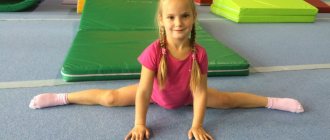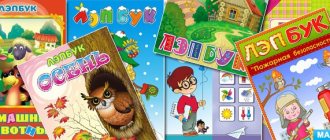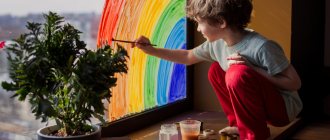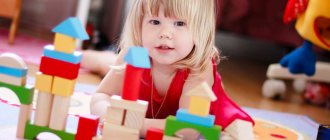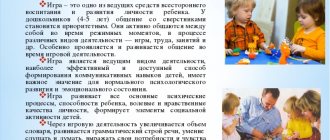Massage and self-massage in the correctional work of preschool educational institutions
MB preschool educational institution No. 23, Beloretsk, Republic of Bashkortostan
Teacher speech therapist
Link to the article, when indicated in the bibliography (according to GOST R 7.0.5–2008):
Berdnikova O.N. Massage and self-massage in the correctional work of preschool educational institutions // Sovushka. 2016. No. 1. URL: https://kssovushka.ru/e-sovushka.2016.n1-a/ZP15120146.html (access date: 02/05/2022).
Self-massage Self-massage is a massage performed independently; massage is dosed mechanical irritation of the human body using various techniques and manipulations performed by hands and specially selected natural materials, as well as special equipment. Under the influence of self-massage, biologically active substances are formed in the skin, which dilate blood vessels, have a positive effect on the entire body, increased delivery of nutrients to the tissues and organs of the massaged area, faster removal of decay products, and increased metabolic processes in this area of the body. Self-massage improves the functional ability of the central nervous system, affects biologically active points, and activates deep-lying sensory pathways. It is used to improve performance, restore strength, and also to prevent colds. Methodology Self-massage techniques are specially taught to children in classes and in everyday life, always using play techniques: for example, plot motivation and recitative contribute to developing rhythm and increasing the emotional mood in children of primary preschool age. Self-massage techniques should become a permanent means of activities in the rhythm of a preschooler’s day and be used in all types of activities daily. According to V.G. Adamenko, the diameter of active points varies depending on the person’s condition. During sleep and extreme fatigue, the points have a diameter of less than one millimeter; when a person wakes up, the diameter of the dots increases to one centimeter. These studies confirm the need for self-massage of the hands, feet, and head after a nap. Certain zones of influence are identified on the hands, through biologically active points on the internal organs:
- thumb - lungs, respiratory system,
- index finger and edge of the hand - large intestine,
- middle finger - vascular system (allergies),
- ring finger - endocrine glands (adrenal glands, pancreas, mammary gland, thyroid and gonads),
- little finger - heart.
It is recommended to use a massage of a specific finger when children perform self-massage of their hands (longer time is spent on one of the fingers, a thorough massage is performed). It is necessary to allocate a specific time and day of the week for a deeper study of one or another system of internal organs, at the same time there should be no overorganization. We recommend performing this type of massage at any time during the preschooler’s daily routine, but a prerequisite is twice a day. In the autumn-winter period, you need to pay special attention to the massage of the thumb; when coughing, the terminal phalanx of the middle finger is strongly massaged. Head massage Massage the back of the head in a circular motion, fingers placed tightly. Rub your ears with your palms from bottom to top and top to bottom, then rub every millimeter of your ear with your fingers, rising from the lobe along the twist of the ear inward. Massage the scalp, moving the scalp with spaced fingers from the hairline to the midline of the head, starting from the back of the head, ending with the forehead. Separate a strand of hair on an area of the scalp, approximately 1-2 cm2, wrap it tightly around your finger until pain appears. Remain in this position until the pain disappears. Next time the tension is a little stronger. Gradually, the scalp will become elastic, saturated with nutrients and increased blood circulation. Facial massage Massage the forehead from the eyebrows to the hair, from the middle of the forehead to the temples 2-3 times in a circular motion. Massage the brow ridges, eyebrows, edges of the eye sockets, orbicularis oculi muscles along the trajectory of the transverse figure eight with the center at the bridge of the nose in two directions. Nose, starting from the bridge of the nose, nostrils, tip of the nose. From nose - cheeks to ears. Lips, corners of lips. Chin, cheekbones. The main thing on the face of the eye is to carefully move around the eyeball with pauses and pressing movements with two, index and middle fingers. With your inner vision, observe the changing shades of the colors of the rainbow with each subsequent massage. The norm is light golden tones. Massage of the magic points of the ears This type of hardening is based on the stimulation of biologically active points located on the auricle and reflexively connected with almost all organs of the body. Massaging these points is useful, in particular, for improving the functioning of the respiratory system and protecting the body from colds. Is accessible to children of all ages. It is recommended to do it in a playful way 2-3 times a day. Hand massage Vigorously rub your palms. Gently rub the outer sides of your arms in a circular motion, moving to your forearms and shoulders. Press one by one on the phalanges of the fingers, starting from their bases to the tips of the fingers, pressing until painful on the nails. Twist each finger 2-3 times in one direction, then in the other. Press the tips of your fingers alternately to their bases inside the palms. Press your fingers alternately to the base of your palm. Alternately bend your fingers towards the back of your hand. Massage your arms up to your shoulders, alternating between stroking, rubbing, and soft palpating with circular movements of your fingers. Intense pressure on the fingertips stimulates blood flow to the hands. This promotes psycho-emotional stability and physical health, increases the functional activity of the brain, and tones the entire body. Hardening massage of the soles Hardening massage of the soles as an effective type of hardening is recommended for children of middle and older preschool age. It is based on stimulation of active points located on the soles of the feet. Foot massage is done daily. If massaging the foot with a roller or rolling pin is carried out in the morning and evening for 3-10 minutes, then a full massage is enough to perform once a week.
What is self-massage?
Self-massage is a combination of stroking, rubbing, kneading and vibrations that a person performs on the surface of his body. Self-massage in speech therapy practice is divided into 3 types: general (self-massage of the head, neck, torso), articulatory (self-massage of the lips, cheeks and tongue) and finger massage.
Any self-massage cannot do any harm, and its benefits are obvious. It trains blood vessels and promotes better oxygen supply to internal organs. By doing self-massage, a child strengthens the muscles of the hands and fingers, relieves muscle tension, and kneads one or another part of the body or face.
Another advantage of self-massage is its accessibility: you don’t have to go anywhere and change your routine, and you can do it at any convenient time.
Regular self-massage and adult supervision over its correct implementation are important.
Basic principles of massage
- You can start massage and gymnastics only when the child reaches 1.5 - 2 months of age.
- It is better to practice daily, setting a certain time for this and trying to stick to it.
- You need to start a massage for a newborn 30-40 minutes after feeding, end 20-30 minutes before meals, and only if the child is in a calm state and in a good mood.
- For the first lessons, 5 - 6 minutes will be enough, gradually increase the time to 10 - 15 minutes. The optimal duration of massage for an “experienced” baby after six months is 30 minutes.
- The massage is carried out in a ventilated room at a temperature not lower than 20 °C.
- It is best to conduct classes on a changing table or any other flat surface covered with a small oilcloth and a diaper. The surface should be wide enough to easily turn the baby over.
- Before the massage, the baby should be clean, the mother’s hands should be clean, dry, warm and with trimmed nails. It is better not to use talcum powder or petroleum jelly, as they clog the pores of the baby's skin. To avoid damaging delicate baby skin, rings, watches and bracelets must be removed.
- During the massage, try not to make sudden movements or raise your voice. In order for both you and your baby to enjoy themselves, and for the activities to be beneficial, the environment should be calm.
- Try to keep your child in a good mood during classes. Hold it confidently, but very carefully, without allowing any violence. You should especially protect your head from shocks and bruises. If the child is restless and crying, pause and do not start again until he calms down.
- Movements when performing a massage are directed along the blood vessels: strictly from bottom to top, from the periphery to the center. The liver area should be bypassed when massaging the abdomen. Also, the inner thighs, the child’s genitals and elbows are not massaged. When massaging your back, you should not use shock techniques (patting, tapping) in the kidney area.
- Contraindications to the use of massage for babies: acute febrile conditions, various infectious diseases, severe forms of rickets, extensive inguinal, femoral and umbilical hernias, congenital heart disease, severe blood diseases, malignant tumors (before their radical treatment), diseases accompanied by brittle bones and pain in them, acute tuberculosis, digestive disorders, as well as various inflammatory skin diseases.
Combine business with pleasure! While you are doing massage and gymnastics, read poems, nursery rhymes, and sing songs to your baby. Name parts of the body, objects that fall into the child’s field of vision, comment on your actions - this way you are also engaged in speech development.
The positive effect of self-massage
“Massage of the articulatory apparatus and articulatory exercises not only improve the motor function of lagging brain systems, but also involve nearby brain systems in their work.” M. E. Khvattsev
As a result of regular self-massage in children, the muscle tone of the articulatory apparatus is normalized (in the most difficult cases, the degree of manifestation of defects in the articulatory muscles decreases); those muscle groups that were not sufficiently included in the pronunciation process begin to work; the organs of articulation are ready to form voluntary, coordinated movements and to produce defective speech sounds; hypersalivation decreases. The advantages of self-massage also lie in the fact that children enjoy doing it and therefore parents can easily repeat the self-massage procedure several times a day, performing various exercises. In speech therapy classes, these exercises are performed simultaneously with several children, which creates a certain competitive element and promotes a sense of community.
Option 2
— We received a new letter from Pilyulkin, with drawings. He tells us that guys, we also have “magic points” on our bodies that will also help us cope with Queen Cold and Princess Bad Mood. Let's look at these drawings and find these points from each other (children look at the drawings together, in pairs they study the points on a friend's body, on their own body). By gently massaging each point ten times every day, we will become strong and resilient. But remember, it is important that your touches are gentle and pleasant to your friend, only then the “magic points” work.
Formation of moral health of preschool children: Activities, games, exercises / Ed. L. V. Kuznetsova, M. A. Panfilova. - M.: TC Sfera, 2003. - 64 p. pp. 19-22.
Rules for performing self-massage
Before performing articulatory self-massage, it is necessary to check the cleanliness of the baby’s hands and face. It is advisable that the child have a clean handkerchief (preferably a disposable one), because sometimes excessive salivation accompanies the performance of certain exercises. Contraindications to self-massage are open wounds on the massaged area. It is better if the baby does articulatory self-massage in front of a mirror. The only thing you need to remember is that the child needs to perform self-massage for 7-10 minutes, without causing any discomfort. Each movement must be repeated 4-6 times. It is good if, when performing exercises, the child hears speech accompaniment in poetic form or calm music.
